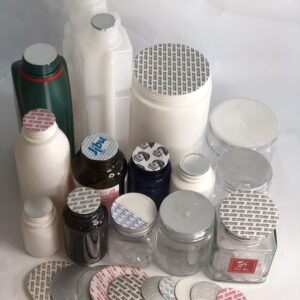
10 Innovative Packaging Sealing Technologies for Your Product
Introduction
Packaging is a critical component of product safety, shelf appeal, and functionality. As consumer expectations evolve, businesses must adopt the best sealing technologies to ensure products are delivered intact, fresh, and with strong branding. Whether you are in the food, beverage, or pharmaceutical industry, choosing the right sealing method can make a significant difference in product quality and brand reputation. Custom packaging solutions for businesses are essential in selecting the best sealing technology to fit your unique needs.
Sam Lan – Comprehensive and Global Packaging Solutions
At Sam Lan, we specialize in providing custom packaging solutions tailored to your business needs. In this blog post, we’ll explore 10 types of packaging sealing technology that can help elevate your products’ appeal, safety, and durability. Let’s dive into the most popular packaging sealing technologies you can incorporate into your product packaging strategy.
1. Heat Sealing
Heat sealing is one of the most common packaging sealing technologies, where heat is used to melt and bond materials together. This method is widely used for sealing flexible packaging, such as pouches and bags. Heat sealing provides a strong, tamper-evident seal, making it ideal for food and beverage packaging.
Why choose heat sealing for your packaging?
- Offers secure and tamper-evident seals
- Works well for various materials, including plastic and aluminum
- Ideal for food and consumer products
2. Induction Sealing
Induction sealing uses an electromagnetic field to bond a foil liner to the mouth of a container, typically a bottle or jar. This process creates a hermetic seal, ensuring the freshness and integrity of the product inside.
Advantages of induction sealing:
- Provides airtight seals that prevent contamination
- Ideal for pharmaceuticals, cosmetics, and food products
- Tamper-proof and reduces the risk of product spoilage
3. Pressure-Sensitive Sealing
Pressure-sensitive seals use adhesive materials that bond when pressure is applied. This type of sealing is common in packaging for both food and non-food products, as it requires no heat or additional tools.
Key benefits:
- Fast and efficient sealing process
- Can be used for a wide variety of packaging formats
- Ideal for retail packaging, including labels and tapes
3 Things to Choose “Seal Liner” For Best Results

4. Ultrasonic Sealing
Ultrasonic sealing employs high-frequency sound waves to melt and bond the edges of materials together. This is particularly useful for sealing plastic films, creating airtight seals without the need for heat or adhesives.
Why ultrasonic sealing is gaining popularity:
- Produces clean, durable seals without heat
- Low energy consumption compared to heat sealing
- Perfect for thin and delicate packaging materials
5. Adhesive Sealing
Adhesive sealing uses a sticky substance to bond two surfaces together. This method is often employed in the packaging of items like cartons, cases, and blister packs.
Benefits of adhesive sealing:
- Great for a wide variety of packaging materials
- Provides flexibility for different shapes and sizes
- Cost-effective option for high-volume production
6. Vacuum Sealing
Vacuum sealing is commonly used in food packaging, where air is removed from the package to extend shelf life and preserve freshness. This technology is ideal for products like meats, cheeses, and dry goods.
Key advantages of vacuum sealing:
- Extends the shelf life of products
- Reduces product spoilage and waste
- Helps maintain flavor, texture, and nutritional value
7. Cap and Closure Sealing
Cap and closure sealing is crucial for products that come in bottles or jars. The process ensures a secure closure, preventing leakage and contamination. Commonly used in beverage, personal care, and pharmaceutical industries, this method offers both functional and branding benefits.
Benefits of cap and closure sealing:
- Prevents leakage and ensures product integrity
- Offers tamper-evident and child-resistant options
- Customizable for various bottle shapes and sizes

8. Resealable Sealing
Resealable seals are designed for products that may need to be opened and closed multiple times, such as snack foods, frozen products, and health supplements. This technology uses a variety of materials and mechanisms to ensure a convenient and secure reseal.
Why resealable sealing works for businesses:
- Increases convenience for consumers
- Helps preserve product freshness over time
- Popular for snacks, frozen food, and health-related products
9. Tamper-Evident Sealing
Tamper-evident sealing provides clear evidence when a package has been opened or altered. This is especially important for pharmaceutical, cosmetic, and food packaging where safety and product integrity are top priorities.
Why tamper-evident sealing is essential:
- Increases consumer trust and safety
- Reduces the risk of product tampering
- Common in sensitive product packaging such as medicine or vitamins
10. Child-Resistant Sealing
Child-resistant seals are specifically designed to prevent children from easily opening packaging. This technology is commonly used for pharmaceuticals, cleaning products, and any item that could pose a danger if ingested or misused.
Why choose child-resistant sealing:
- Ensures safety for households with children
- Complies with safety regulations
- Ideal for medicine, chemicals, and hazardous goods
Why Choose Sam Lan for Your Packaging Needs?
Product Standards and Certifications of Sam Lan Company Limited
At Sam Lan, we understand the importance of selecting the right packaging sealing technology for your products. Whether you need tamper-evident seals for pharmaceutical products or resealable packaging for snacks, we offer a range of custom packaging solutions for businesses designed to meet your unique needs.
With our cutting-edge packaging technology, you can ensure that your products are safely delivered, stay fresh, and stand out on the shelves.



